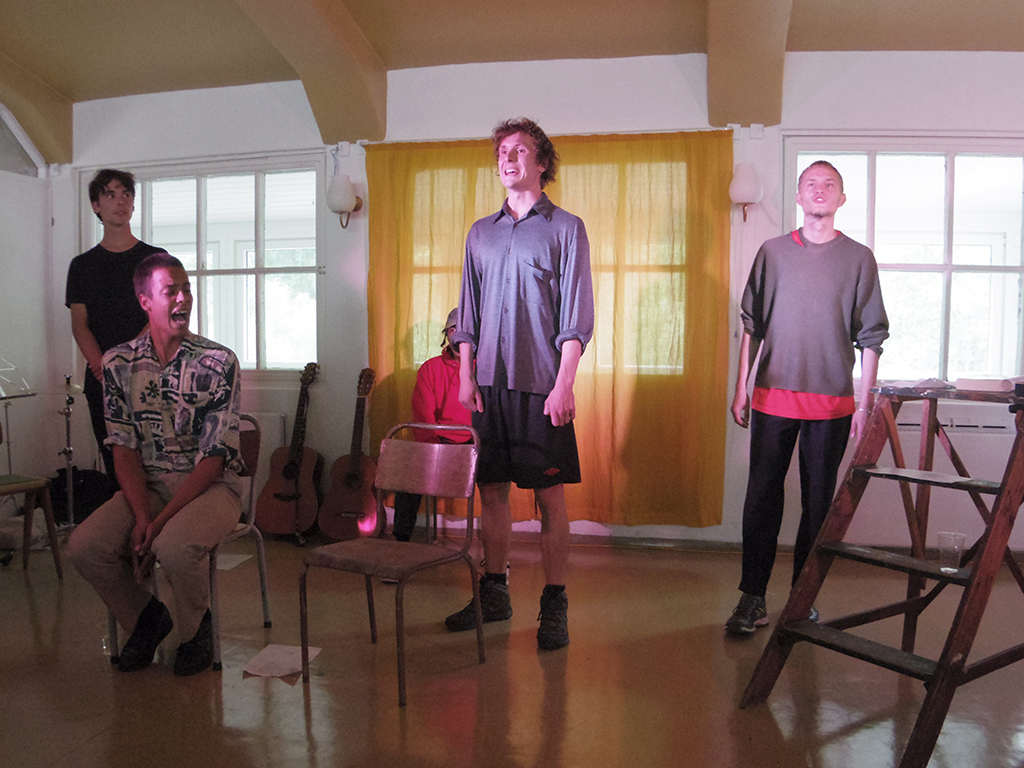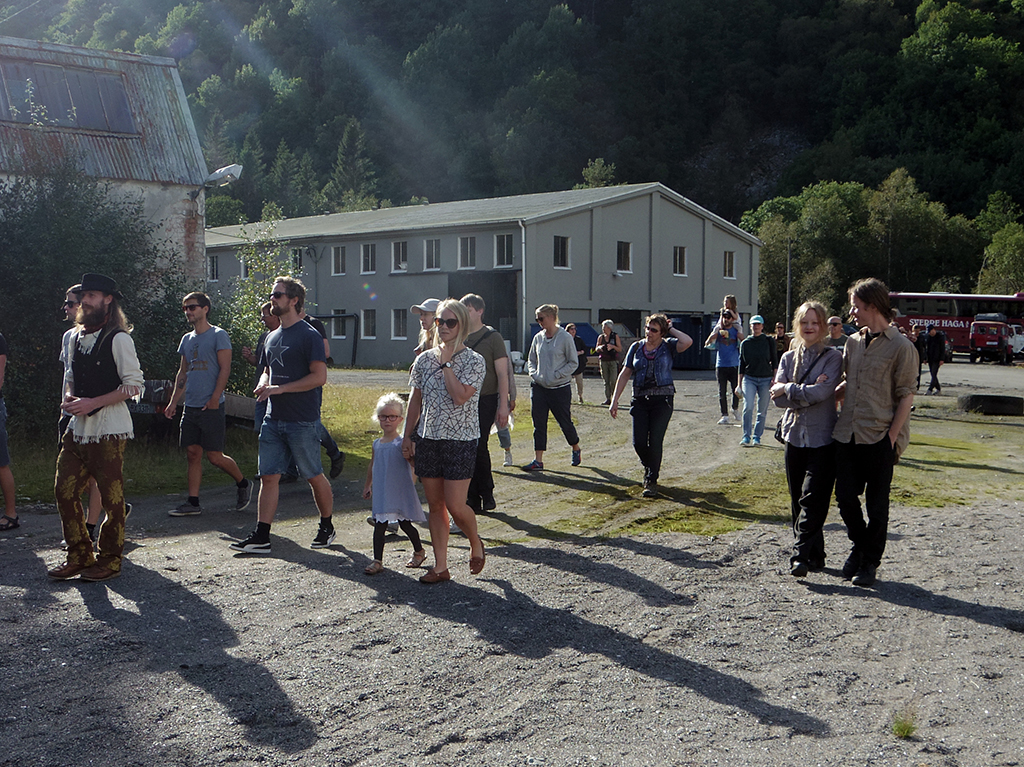The performance program grew out of a residency by German curator Nico Anklam at Møn, Denmark, where Fluxus composer Henning Christiansen 1
- Christiansen came of age in Copenhagen’s avant-garde music scene in the 1960s, where he studied as a musician and composer and denounced his avant-garde musical predecessors. In the early years of that decade he was kicked out of school and became involved with Nam June Paik and the beginnings of the Fluxus movement in Europe. Christiansen continued to work with Fluxus artists throughout his career, perhaps most famously alongside Joseph Beuys, for whom he wrote a number of scores.
Velferden itself hosts a series of associations that illustrate some of the issues at play upon the local landscape. Velferden was once mined for a black ore that, in its refined state, produces the whitest of whites. The white, as any painter will recognize, is called titanium white, and the company that mined it was aptly named Titania. Mounds of infertile sand were created as a by-product of the mining operation during the 50 years that the mine was in use. This sand was later shipped out by train and dumped into the surrounding natural landscape, one comprised of the rolling grassy hills and precipitous rock faces typical of Norway. There have been attempts, since the cessation of the mining operation in the 1960’s, to cover the sand in top soil and allow it to rejoin those surrounding hills. These attempts have all failed, as any water that falls onto the topsoil slips away through the sand, once again revealing a desert. Reflecting now on the experience of the area and the festival, I can’t help but see this as analogous to the porousness of the landscape in all of its layered associations; industry giving way to wilderness and history to present circumstances.
This impression is encouraged by the work of Stene, who describes herself as a landscape painter, but makes work which resembles less any traditional notion of landscape but rather an exploded collection of the elements which comprise and act upon it. Velferden gives context to this work: its defunct mining buildings still utilized as workshop spaces – hardhats and unopened gas tanks sitting amongst 100 year old forged tools and obsolete machinery. Around the buildings, gravel and crumbling asphalt give way to lush undergrowth and woods, with metal scaffolding from the mines seeming to have sprouted alongside the trees on the surrounding hills.
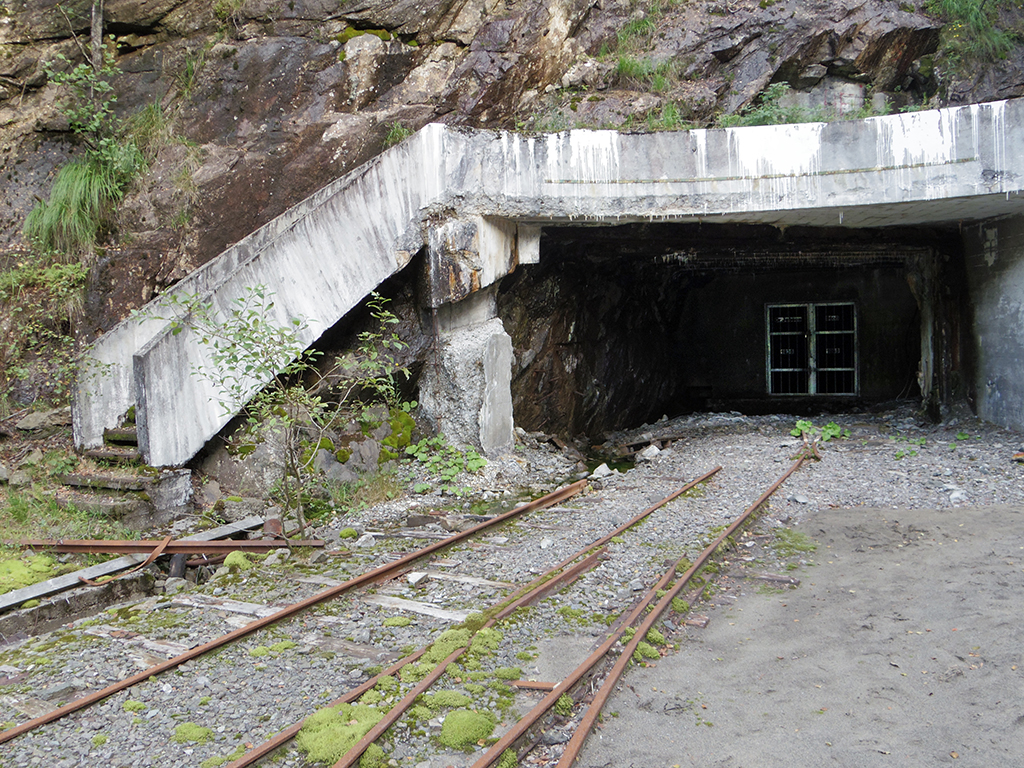
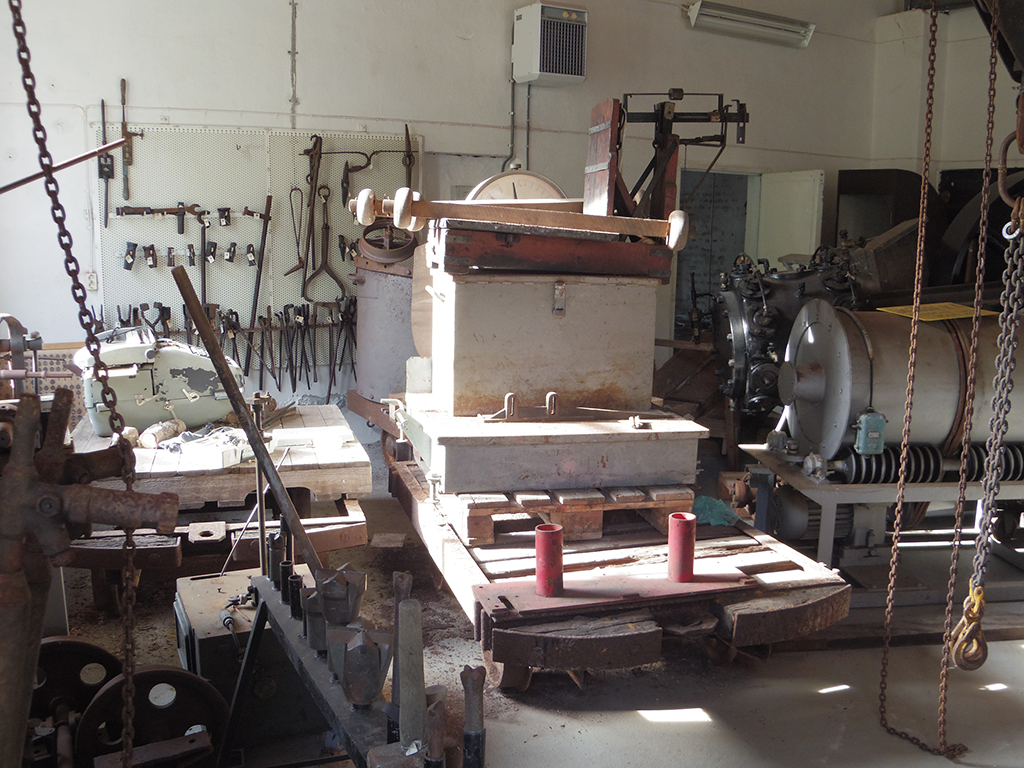
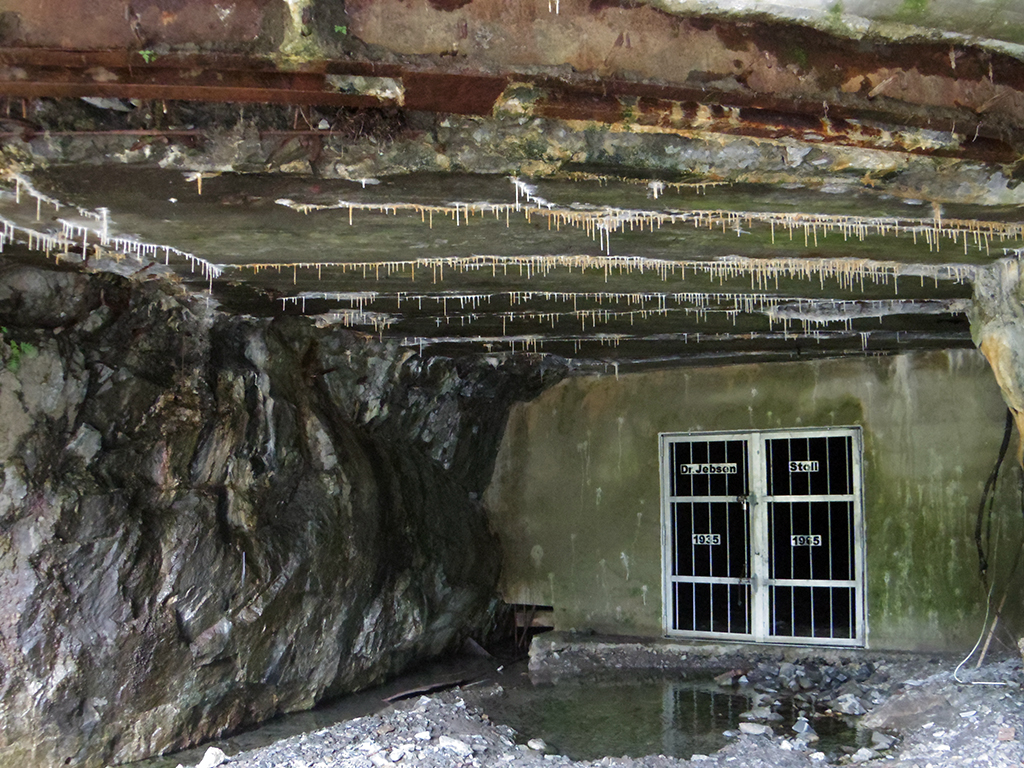
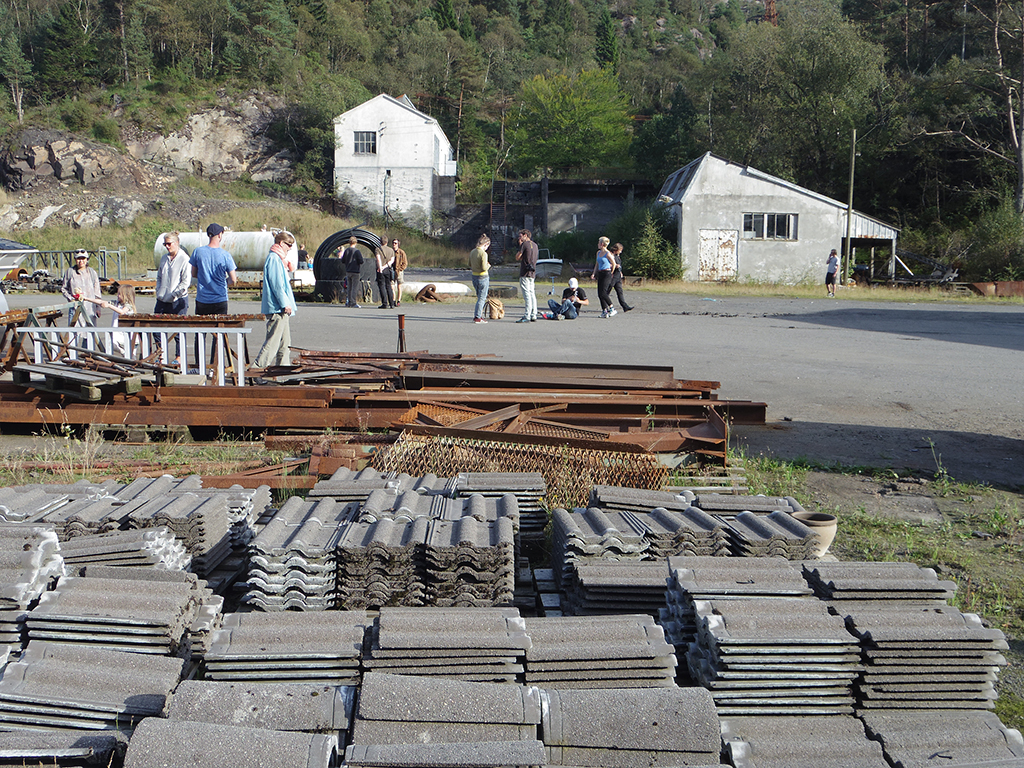
The performance works presented during this one-day festival were stated to have been influenced by the location. The title, ____ //// /O/O/O The mouth expresses thoughts. The landscape renders its tone! references a piece of musical annotation by the aforementioned Fluxus artist Christiansen, in which he visually compares the sounds of spoken Danish, Norwegian, and Swedish, implying that each language audibly reflects the geographic landscape in which it is spoken. Møn, Denmark, the site of the first iteration of the project, is emphatically flat compared to the Norwegian landscape. Sweden, by comparison, is hilly and full of lakes, and the corresponding language is more rolling, according to Christiansen’s reasoning.
With landscape, language, and sound as themes, the festival was formulated to embrace this reasoning. Anklam’s curatorial methodology consisted of choosing the artists and then emphatically setting them loose in the location. This apparently worked in many cases, spawning a site-specific church service and rock ritual. By that same token, I would argue that some of the most vital aspects of the day had more to do with how the setting framed the performances rather than any intentional interventions by the artists.
It seems worth noting that Anklam’s festival presented a compelling set of contradictions: an institutionally organized conceptual framework drawn from a radically anti-institutional art movement; a white-cube approach to research in a messily cube-less setting; a formal framework for a day largely consisting of informally hanging out. It was definitely not Fluxus, in the sense that it presented works rehearsed and rehashed in a contemporary context. In addition, the artists have various relationships (or lack thereof) to the movement, and Fluxus can now be considered in an art historical context.
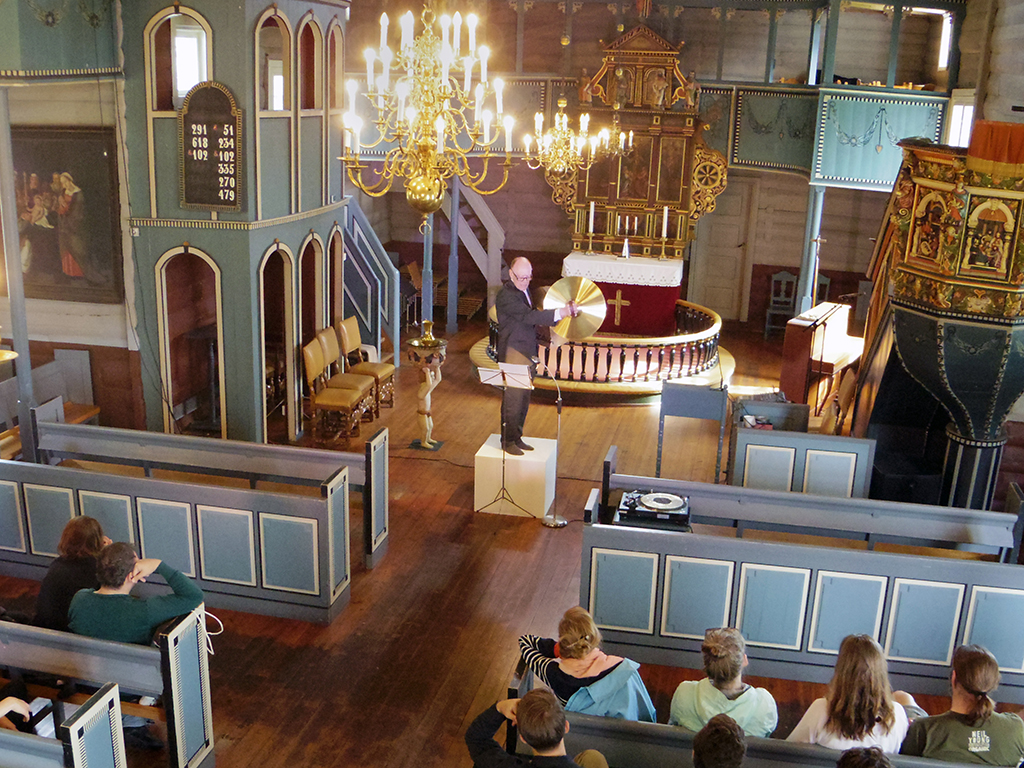
The day began at Sokndal church, a wooden structure whose stark white exterior surrounds a space painted green, blue, red, and gold, and filled with elaborate woodcarvings.
The Swedish artist Sven Åke Johansson stepped onto a white box placed at the front of the church, a stand of sheet music in front of him. Johansson’s work, like Christiansen’s, is scored, but the reference point is not conventionally musical. The work, Solo für zwei Konzertbecken, is based on an artwork from the Prinzhorn collection of art by the mentally ill. 2
- The work from the Prinzhorn collection is made of a toilet roll, which is covered in a mysterious language of the artist’s invention.
Johansson, in his neat suit, never took his eyes off the sheet music. He clapped the cymbals, tilting them and tucking them under his arms to redirect and abruptly stop the vibrations. There was repetition, a sort of cadence. The wooden church swallowed all of this audible information and made it seem a natural part of the space. As Johansson played, he removed his shoes. All of this seemed an intentional part of the composition. Johansson’s skill as a musician was obvious despite the starkness of the performance: when he made circles in the air with the cymbals he seemed to encircle the sound in parallel with the physical gesture.
During Johansson’s performance, the line between propriety and nonsense was thin. All the rules inherent in spectatorship, relative to a highbrow musical feat, seem to become a part of the work. The audience sat quietly, but sometimes stifled laughter. The absurdity of the social contract maintained in such a context was evident, but nonetheless we upheld our end of the deal, staying quiet when expected, and clapping on command.
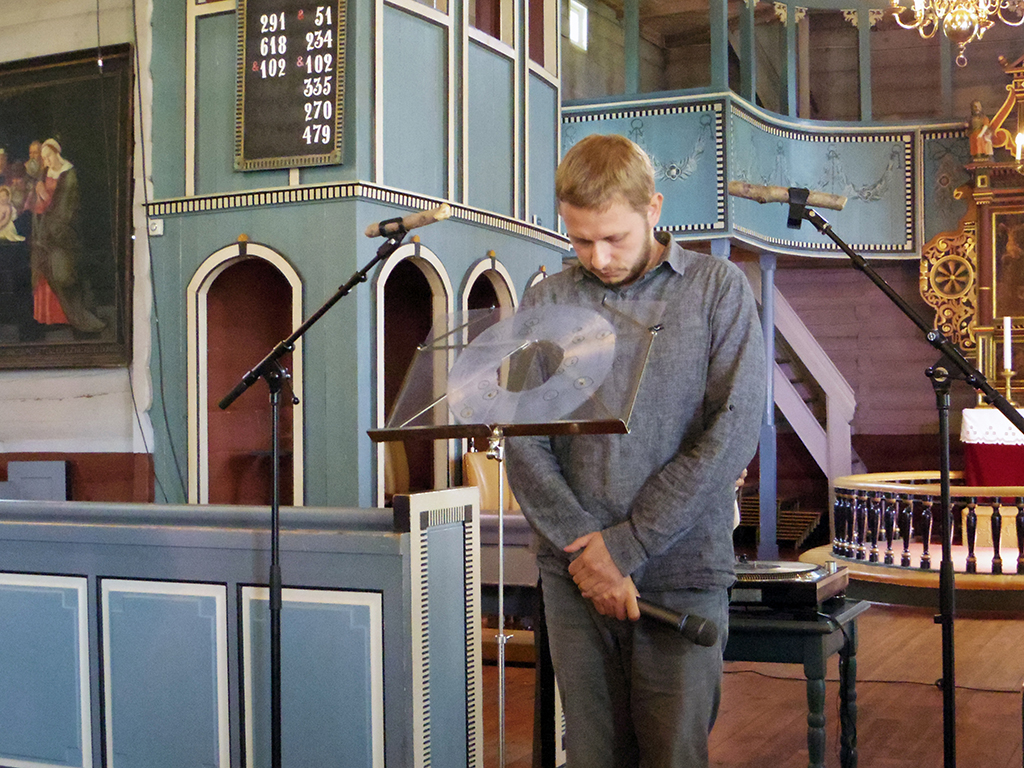
Johansson’s performance lead into Arturas Bumšteinas’, who traded Johansson’s white cube for a turntable placed at the front of the church. Bumšteinas, a Lithuanian Jew, lead a church service of his own devising entitled mess(a) for fallen trees and insects. A simplistic, ambling piece of music set the tone on the church organ. This lent a deadpan comedic element to the proceedings. A voice began to speak – the voice of the artist, amplified from behind the turntable. He recounted a story about George Maciunas illegally planting trees on his street in New York. The story is true, drawn from Maciunas’ memoirs. Bumšteinas grew up with the legacy of Fluxus in Lithuania (where Fluxus founder Maciunas originated) and travelled to New York to track down these particular trees, which have since been removed by city authorities. They are infamous for living only 40 years before dropping all of their branches.
Bumšteinas then set up two microphone stands at the front of the church, each holding a branch. The organ music continued, the story now seeming tragi-comic. The artist described making copies of Fluxus recordings with wood glue, and having insects land in the glue, becoming embedded as it dried. The artist began to play one of these records, which produced an eerie sound akin to a swarm of insects. There was rhythmic thumping, the sound of the needle jumping over an embedded insect body and crashing down again onto the glue. The artist shook the turntable, and moved the needle between pinched fingers, looking for more bugs to hit.
In talking to the artist after his performance, several things were made evident: that his deadpan delivery is his normal demeanor, that he has researched Fluxus for a number of years, and that his desire to engage with the legacy of the movement is tempered by skepticism. Skepticism, specifically, of the motivation to reinvigorate art history, which he sees as more often than not a form of nationalist myth-making, and a futile one at that. In light of this, his humor began to seem less opaque.
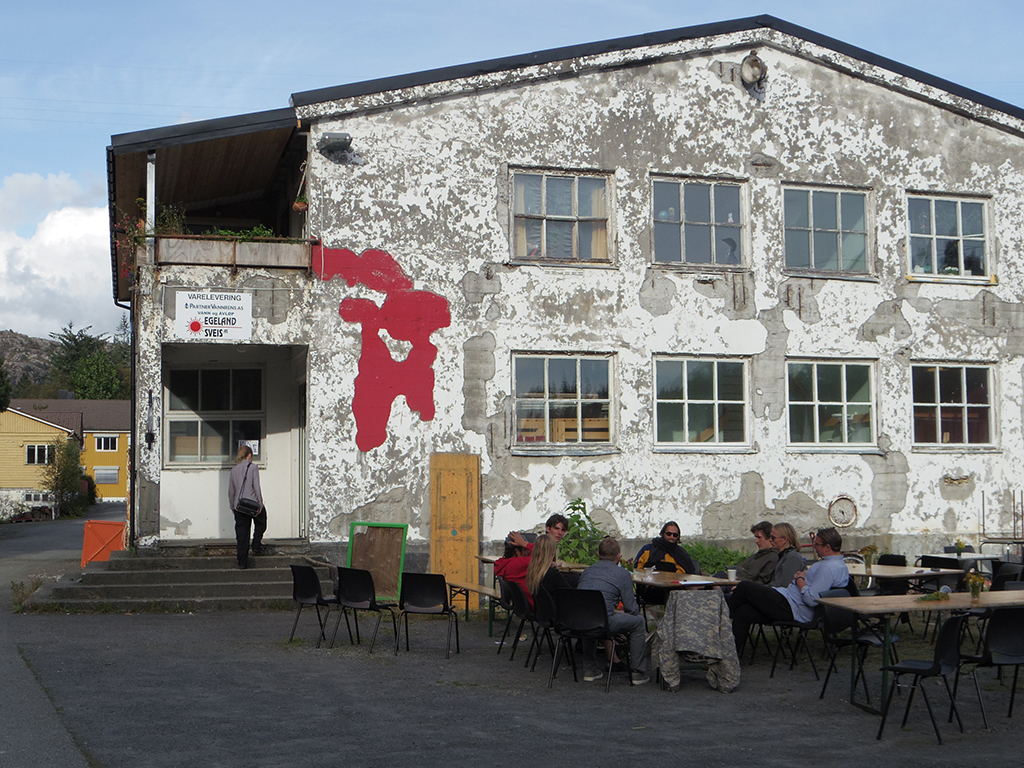
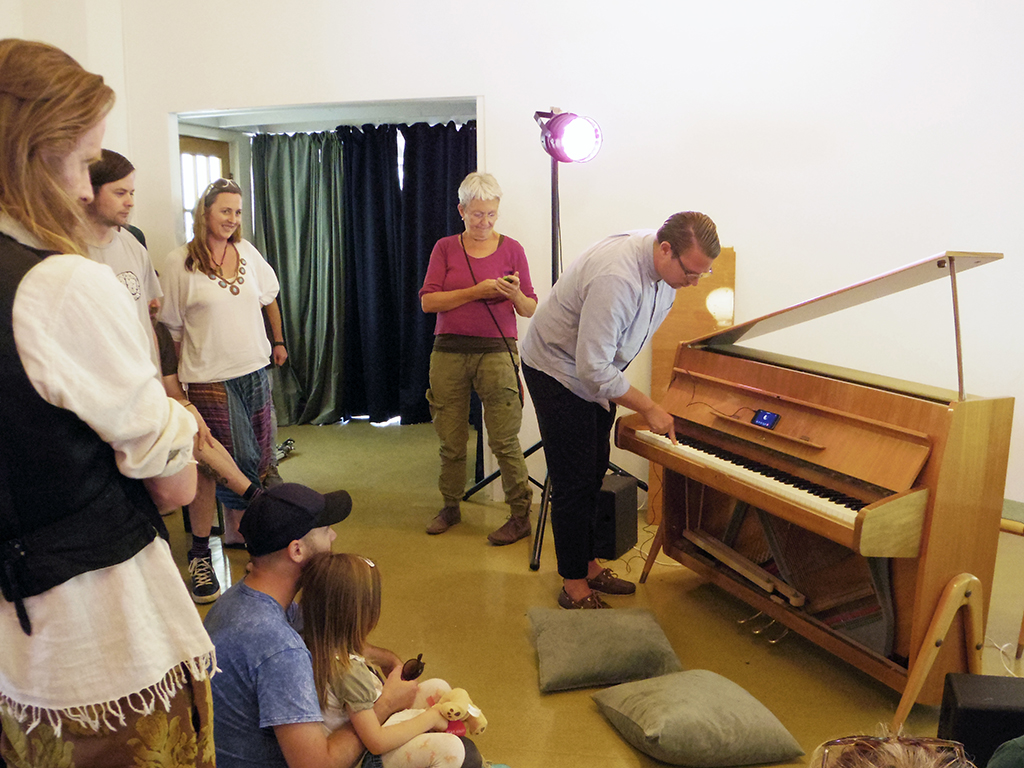
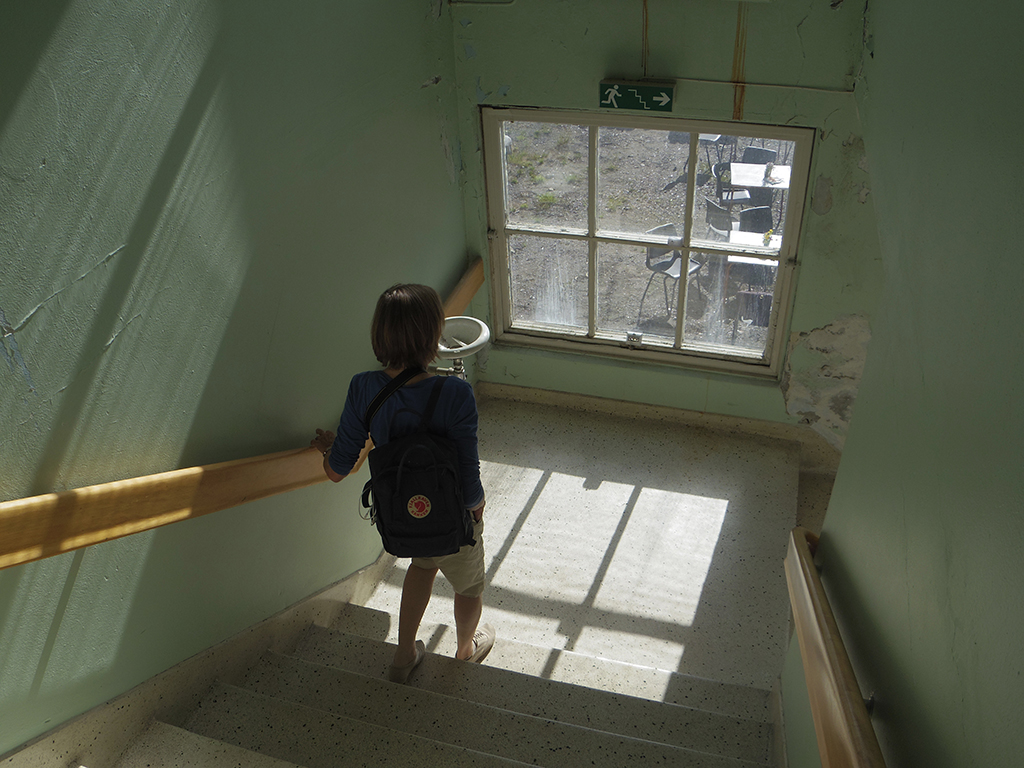
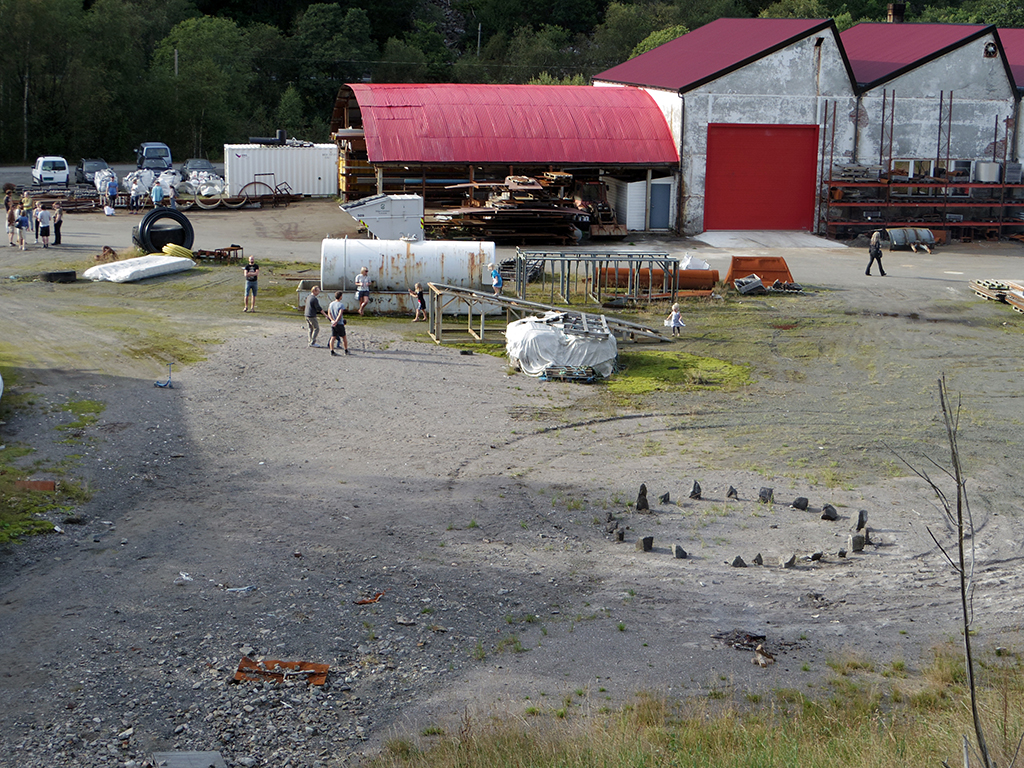
After Johansson and Bumšteinas wrapped up, we were bussed to Velferden where the rest of the day’s performances took place. We ate a casual lunch at tables set up on the gravel outside of the buildings, with guests mingling or wandering over to see the mouth of the mine, now blocked by a gate, but still emitting a noticeable flow of cold air. I found myself in conversation with a retired mine employee. Our talk wandered away from titanium extraction to the earlier history of human interaction with the hills: during the gold rush in the early 1900s, hundreds of farmers excavated the local landscape, leaving the land “like swiss cheese”. The analogy seemed fitting.
Camille Norment’s performance followed lunch. The most internationally notable artist in the lineup (she represented Norway at the last Venice Biennale), her participation was by extension also the least involved. She was wrapped up in projects in Oslo, and phoned in her performance via Skype. I mean this quite literally. Norment appeared via a phone placed on the piano in the old mine’s common room, and responded in kind on a piano of her own as Anklam and then the audience played the instrument. The experience felt uncanny, maybe because it was made to seem that the artist inhabited the piano. It was a strange experience of presence without any of the inconveniences of being in place. The performance illustrated the pervious condition of inhabiting space alongside technology, but I couldn’t help but feel let down when it wrapped up after ten minutes.
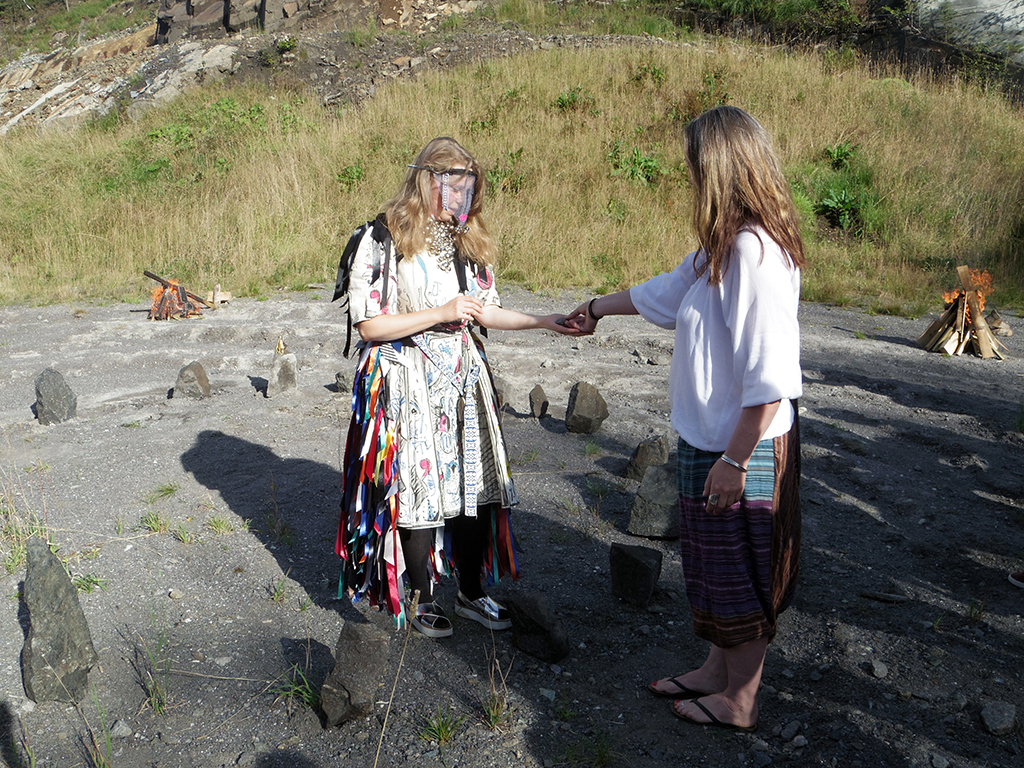
After Norment’s piece, we reconvened around a circle of stones to take in Linda Persson and Pip Stafford’s (S)tone Tension ritual (Frequency / Tension). Persson descended a set of steps leading to the entrance of the mine, accompanied by the sound of a cowbell. In what appeared to be neo-pagan gestures, she interacted with the rocks and the audience, and then lead us towards the open garage door of a warehouse.
Within the warehouse, Stafford’s video was being streamed live from Tasmania and projected onto a screen. The artist’s hands appeared to extract sounds from a circle of fist-sized stones by attaching them to devices resembling electrodes. The rocks produced a sound which could be mistaken for feedback. The wires in the video found their parallel in the setting, an active workshop. Hard hats hung in rows on hooks alongside various tools. Plastic-wrapped lumber sat stacked on the ground. Dust hung in the air. The video screen was dwarfed by the space, the hands filled the screen but it was not hard to imagine them as just one of a number of sets at work within the shop.
Afterwards, I wandered off to look around before the next performance, and found myself in a building filled again with a mixture of old and contemporary tools, a pastiche that seemed characteristic of the setting by this point. Speaking of porousness; to a city-dwelling Canadian it felt miraculous and novel that none of these doors were locked. Layers of human exploitation, natural entropy, and social history were displayed in the yellow-tinted light of dusk as obviously as tools.
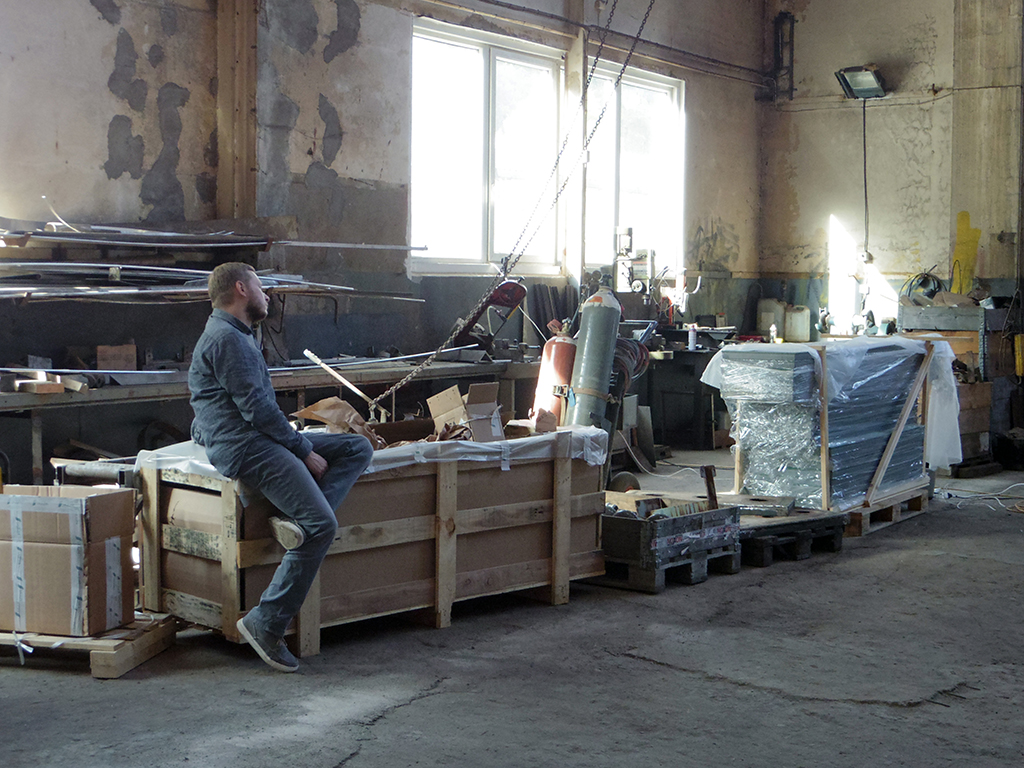

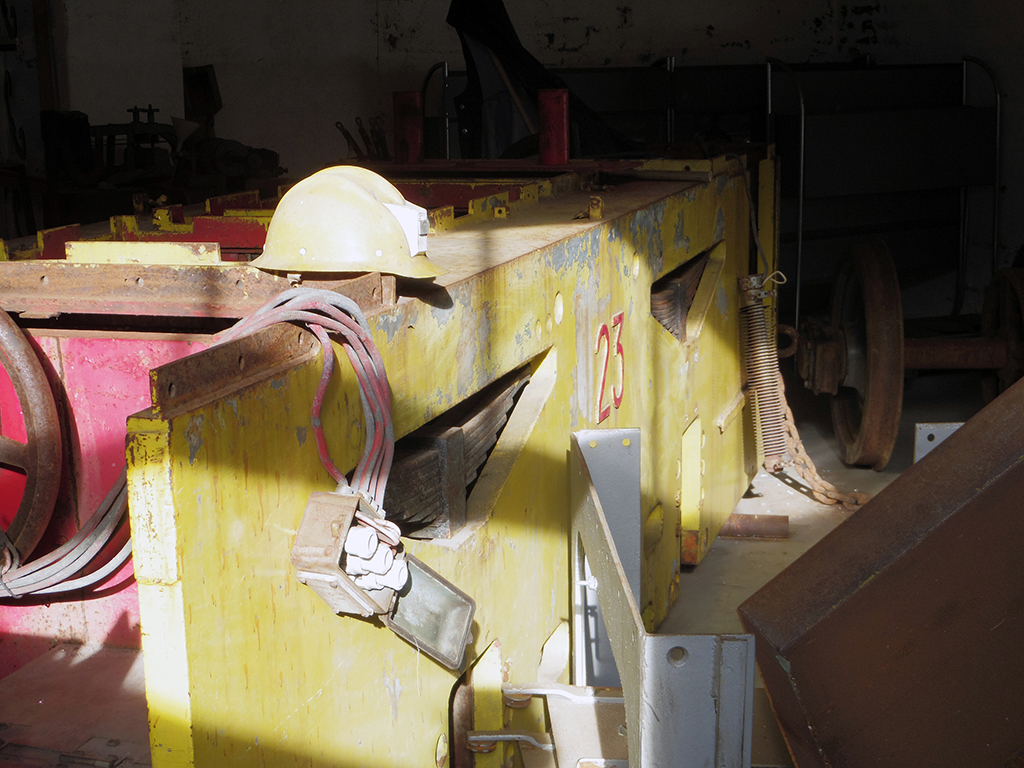
The day was nearing an end. We gathered in the common space that once hosted company parties, conferences, and weddings. Spotlights illuminated a drumset where Johansson took the stage once more. His gestures felt winking; clearly rehearsed, but almost verging on the naturalistic. He affected a serious expression and proceeded to manipulate the audience, once again. The setting seemed to play with time. We sat on institutionally spartan benches and chairs, and the room looked like it once must have as the site of amateur performances and town hall meetings. The surrounding once more raised the question of nonsense in Johansson’s performance as it stood at the intersection of amateurism and professional musicianship, emphasized by his unsmiling employment of a cucumber as drumstick.
Johansson’s experimental number shifted suddenly into a conventional shuffling beat, and all seven members of the Danish artist collective LOL Beslutning filed up to the front and began to sing. Any illusion of being in a different time was shattered as LOL Beslutning appeared on stage in the reimagined activewear typical of the post-normcore underground party set, complete with greasy hair and sneakers.
As Johansson departed the stage, the lights were dimmed. The sun was beginning to sink and the setting felt theatrical. The members of LOL Beslutning stood as a tableau, and presented an operatic version of a television crime drama. The story was translated for me afterwards in broad strokes; a crime, a trial, phrases borrowed from crime-thriller clichés.
The days events tapered to a close after this – the light dusky, the wine running out. We boarded the bus and departed. As I watched the Norwegian hills roll past the windows in the darkening light of the ride home, I wondered if I was the audience or a participant in the landscape? That I thought about this at the end of the day seems a reflection of the strengths of ____ //// /O/O/O The mouth expresses thoughts. The landscape renders its tone! The swiss cheese hills seemed only more filled with holes.
